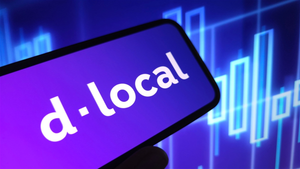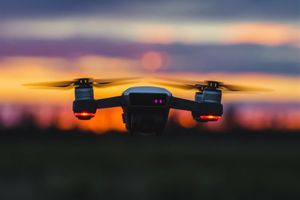Nowadays, Artificial intelligence is the foundation of digital transformation in industries. From next-generation predictive maintenance in logistics to diagnostic systems in medicine, AI is revolutionizing how critical infrastructure operates. It makes systems more effective, allows for making decisions faster, and reduces their operational costs. Yet, with AI becoming more deeply rooted in critical industries, the gap between technological progress and systemic vulnerability closes.

Plugging AI into underlying systems is not only a technical advancement—it's a strategic one that has the potential to reshuffle the deck of how societies are structured. But when computer programs begin to operate transport systems, medical devices, and power grids, the potential for malfunction or abuse becomes cosmic in proportion. That is the precarious balance of proceeding with caution that is at the heart of today's debate over embracing AI.
AI is today a routine part of business-day operations of industries that were previously operated entirely by humans. In healthcare, algorithms interpret medical scans faster than radiologists, predict patient decline in ICUs, and streamline the utilization of hospital resources. In logistics, AI enables route optimization, automates inventory management, and predicts supply-chain disruptions months in advance.
The pitch for sales is blunt: applied to its highest potential, AI removes human error, streamlines decision-making, and saves millions in operational spend. Hospitals use predictive analytics to allocate beds and ventilators effectively. Ports and warehouses use automated systems to deliver goods to customers quickly with fewer accidents. Even utilities use AI to balance power grids and forecast demand without needing to invest in expensive new infrastructure. But this growing dependence carries a hidden threat—security and ethics now determine reliability. A cyber attack that compromises an AI algorithm employed in health care or supply chain not only shuts down operations; it can endanger human lives.
The Security Dimension: When AI Becomes a Target
The smarter, the more vulnerable to hacking. AI systems are unlike traditional software in that they're adaptive—they learn and get better with data. That adaptability, while beneficial, also introduces new risks. Bad actors can poison input data, modify training data, or manipulate model output, with catastrophic effects.
For instance, an AI route optimizer for a transport firm can be tricked into delivering packages to the incorrect locations by showing it false data points. In healthcare, erroneous diagnostic models will diagnose incorrectly, leading to delayed or incorrect treatment. These incidents reinforce the fact that AI security must be at the forefront of agendas rather than an afterthought.
Modern organizations are engaging more with AI security specialists to deliver defense at every stage of deployment. Services extend from built-in threat modeling and data-integrity checking to secure model hosting and frequent audits. Robust security does more than protect from external hacks—it protects from misuse, model drift, and accidental bias amplification.
The vulnerability is singular as AI systems are based on vast networks of sensors, IoT, and cloud architecture. Each and every one of these connections is a potential vulnerability to be exploited. Securing the systems means one must think outside firewalls—it's a question of infusing trust into the whole AI ecosystem.
The Ethical Dimension: Responsibility in Automation
Apart from security risks, the entry of AI into major industries also raises complex ethical questions. Whom do you fault when an AI comes to a life-changing conclusion? How do you ensure transparency when even the engineers themselves are often unable to decipher the reasoning of a neural network?
In medicine, for example, AI can be utilized in detecting cancer or recommending procedures for treatment. But if the model has learned from biased data, then it will perform badly for minority patient groups. AI in this case, being ethical means making the data diverse, interpretable, and under continuous human oversight. The doctor must remain responsible for clinical judgment when utilizing AI as a decision-support tool but not a replacement.
In logistics and transport, AI-driven automation involves work and accountability. With more automated shipping lanes and warehouses, companies have to balance efficiency gains with fair adjustments in the workforce and open accountability.
AI ethics are not moral abstractions—they directly affect public trust. Public perceptions that AI decisions are opaque, unjust, or risky will slow adoption no matter how fruitful the system otherwise is. Ethical development is therefore both a moral and a strategic necessity.
Integration Hurdles: Sophistication Hiding Innovation
Implementing AI into mission-critical applications is never easy. Black-box governance models, distributed data environments, and legacy systems all are sure to get in the way. Further, the technical AI integration process requires top orders of magnitude of IT personnel, subject matter experts, and data scientists.
In medicine, for example, the incorporation of AI into existing hospital administration software means bridging incompatible levels of data, patient confidentiality, and compliance with rigorous standards like HIPAA or GDPR. In logistics, integration can mean coupling AI with legacy ERP software, GPS infrastructure, or third-party APIs—without disrupting normal operations.
Successful integration thus has to prioritize interoperability and transparency. Companies will need to design modular AI systems such that auditing and updating do not disrupt the entire system. This flexibility also enables quicker alteration in the event of changes in regulations or market requirements.
Balancing Innovation with Accountability
To step forward responsibly, organisations need to have two minds: responsibility and innovation. All applications of AI in high-consequence domains need to be exposed to robust ethical testing, continual security testing, and human-in-the-loop examination. Transparency, either in data or decision-making, is required to uphold public trust.
Corporations and governments must make strategic investments in infrastructure that prioritizes explainable AI, moral auditing, and secure model lifecycle management. Public-private partnership can ensure that there is a shared standard so that innovation in AI does not outpace regulation and moral leadership.
The question is not whether AI has a role in critical infrastructure—it's how to ensure that it can serve humanity safely and fairly.
Last but not least…
AI is redefining the efficiency, accuracy, and scope of essential infrastructure systems, but it also increases risk. Whether through data poisoning and model manipulation, bias, or accountability gaps, the threats are on the same level as the opportunities. By investing in strong AI security controls and judicious open AI incorporation, organizations can realize the potential of intelligent automation without compromising safety and ethics.
The future of critical infrastructure will not depend on more intelligent algorithms—but on the intelligence with which we deploy, implement, and secure them.
Media Contact
Company Name: Aristek Systems Ltd
Contact Person: Media Relations
Email: Send Email
Country: United States
Website: https://aristeksystems.com/







